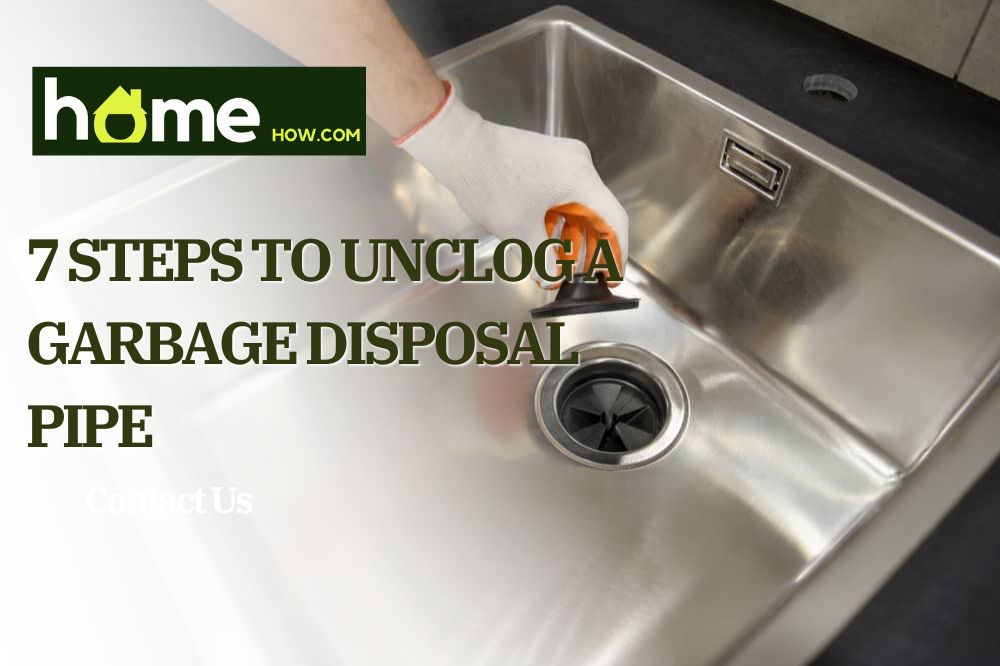Garbage disposal is a handy kitchen tool that helps collect solid food and grind them up. However, garbage disposals are not always rosy, as they might get clogged and stop serving their purpose.
You may decide to get a professional plumber to get the garbage disposal clogged and solve your problem in no time; however, you’ll be doing away with a reasonable sum of money, especially if your appliance gets clogged frequently. So, it is beneficial to take the time to learn how to unclog your garbage disposal and save a fair amount of money, even if you may get your hands a bit dirty.
So, how do you unclog the garbage disposal? First, there are several causes of clogs in a garbage disposal, which you’ll need to find if you don’t want to have consistent clog problems. These causes may be from one or several food items, a non-food item, an obstruction in the blade, or loose fittings in the sink drain. Hence, before learning how to unclog the garbage disposal drain, we must look at some of the common causes of the clogged garbage disposal to identify what measures are appropriate for solving it.
Causes of a garbage disposal clog
A clog usually occurs in the drain tap downstream of the garbage disposal after the food has been ground and is sent out through the drain. The problem with draining is mainly associated with how the food responds to water or lack of water, and when it is not drained smoothly, the food clogs the drain line. So, if you notice the garbage disposal is no longer draining, it likely has something to do with the draining assembly. At other times, you might experience a clog if an object obstructs or impels the blade from working.
However, garbage disposal clogs are primarily due to how the appliance is used. So, follow these to know how you might have caused a clog in your device.
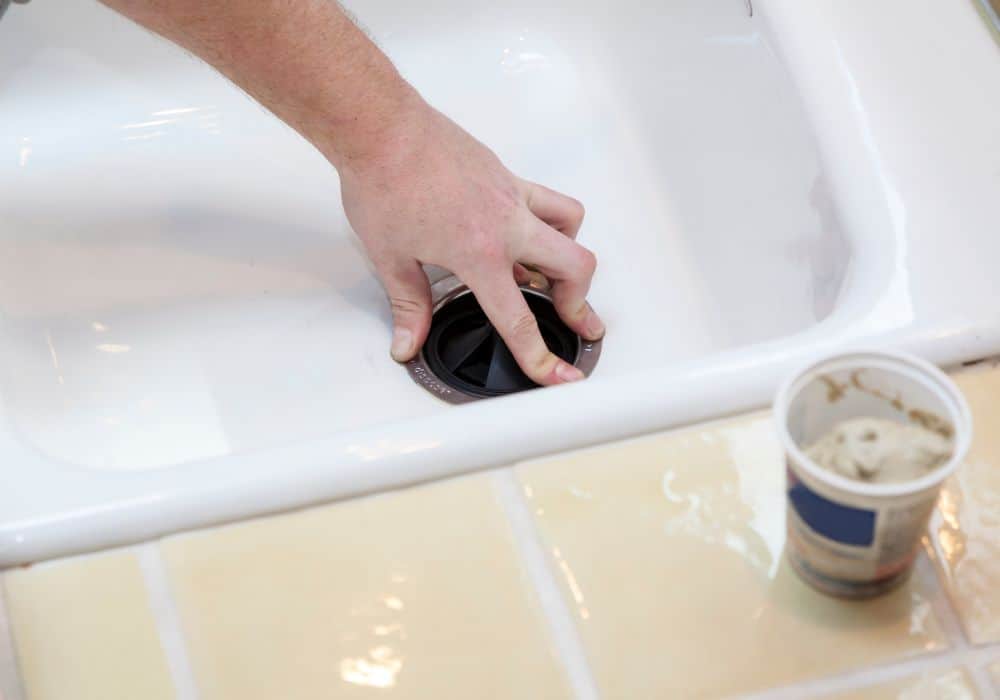
1. Insufficient flushing water
Using little water in draining leftover food items is a sure way to get a clog in the garbage disposal. Because when the water is not enough, the food doesn’t properly drain and then, later on, leads to a buildup that eventually blocks the drainage. To avoid this, leave the water running for at least one minute after the waste has been ground to clear the built-up debris, and then turn the garbage disposal off.
2. Grinding incorrect food types
As effective as a garbage disposal is in helping to eliminate waste, it cannot be used to grind certain food types. Some of these food parts include:
- Hard foods such as seeds, ice cubes, bones, and corncobs are too strong for the garbage disposal to grind and may spoil the blade. Also, pasta, corn husks, lettuce, and banana peels will wrap around the blade and restrict easy movement of the blades.
- Greasy items will quickly clog the drain, and food like potato peels and banana peels can create a thick paste similar to grease that will cause passage problems for waste.
- Lastly, eggshells and coffee grounds also cause similar issues as they become tiny bits when ground and can easily clog areas in the garbage disposal.
3. Too much food at once
A common misconception about garbage disposal is that it can handle plenty of food at once. This is an error that weakens the blades and makes draining more difficult. To know if the garbage disposal is overwhelmed, listen to the sound it makes while working. Overburdened garbage disposal gives a humming sound and rarely moves when inspected. Also, since it is given a sizeable amount to grind at once, the machine grinds into large portions and causes a clog.
- Grinding inorganic waste
The only thing that should go into garbage disposal is food; other items like paper, foil, fabric, and foil, amongst others, will only contribute to a clog and damage your appliance.
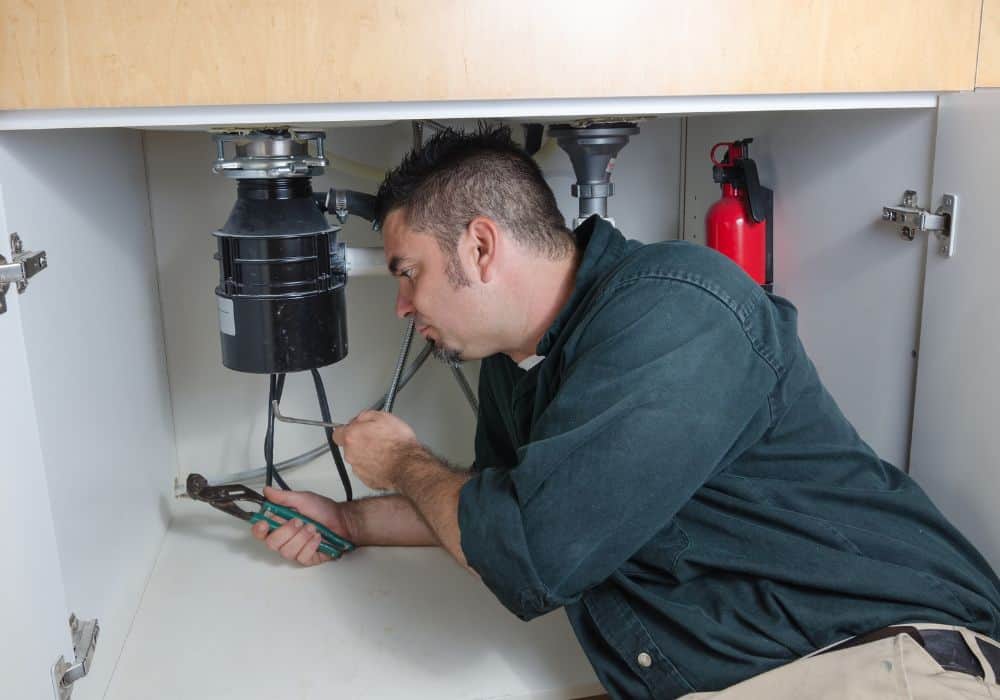
Tools/materials to unclog a garbage disposal
Since you already know the root of this problem, it’s time to understand how to tackle it. Here are the things you’ll need to unclog your garbage disposal:
- Channel-lock plier
- Flashlight
- Baking soda and vinegar
- Plunger
- Allen wrench or wooden handle
- Bucket
- Drain snake
- Dishwasher gloves
How to unclog a garbage disposal
Unclogging your garbage disposal takes less than 30 minutes if you follow the instructions. And while following the things you should do, it is essential to know what you shouldn’t do; one of them is sticking your hands into the appliance to get rid of what’s causing the clog. Unfortunately, this is harmful to your hands and ineffective in solving the problem. Hence, here are the steps to follow to clear up the appliance:
1. Turn off the appliance
This is the first step to take when clearing up the garbage disposal. It is a safety precaution, as you should never work on the appliance while it is switched on. So, before you start, switch off and unplug the device.
2. Inspect the appliance for the cause
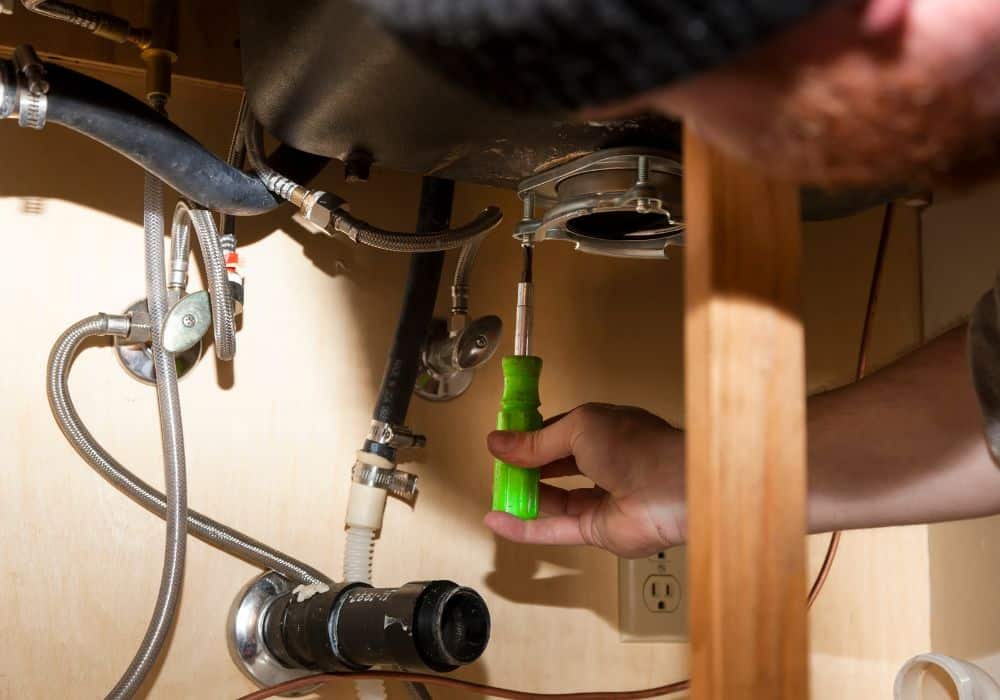
Use a flashlight to look into the garbage disposal and check for the cause of the clog. When you find it, use channel-lock pliers or tongs to carefully extract the clogged items from the machine and dispose of them. When you’ve successfully removed all the residue waste in the disposal, turn on the water and switch the appliance back on. If the device drains the water smoothly, you’ve appropriately unclogged it.
3. Use baking soda and vinegar as a natural cleaner
If the garbage disposal still doesn’t work after you’ve exhumed all the waste from it or you’ll instead have another technique, then you should try this. Baking soda and vinegar will clean food buildup in the unit. This method is perfect for grease or fat buildup and refreshing a badly smelt garbage disposal.
- Make a solution of ¼ cup of baking soda and ½ white vinegar and pour it into the garbage disposal. Alternatively, you can stream the ingredients directly into the disposal.
- Then wait for the fizz to unclog the unit for 10 to 20 minutes
- Pour hot water into the disposal for some minutes to completely clear up the unit
4. Use a plunger to extract food waste
Using a plunger is an effective method of clearing up drains and blocked sinks. It pushes the waste down the drain using water pressure. Here’s how to go about this:
- Cover the drain thoroughly with the plunger
- Next, fill the sink with water around the lip of the plunger to create a water seal
- Plunge up and down firmly and repeatedly to loosen up the drain
- Check if there is any loose waste recovered from the drain and remove them
- Then run on water to see if the water drains freely
5. Use an Allen wrench or wooden handle
If all the techniques above don’t work, locate the bottom of the garbage disposal for a hexagonal hole. Then, use an Allen wrench or hex key to manually turn the impeller blade clockwise and anticlockwise a few times to loosen the clog. Once the blade moves freely, it means the job is done, and you can now pick out the clogged pieces with a plier. If your garbage disposal does not have a hexagonal hole, you can use a wooden handle to perform the technique.
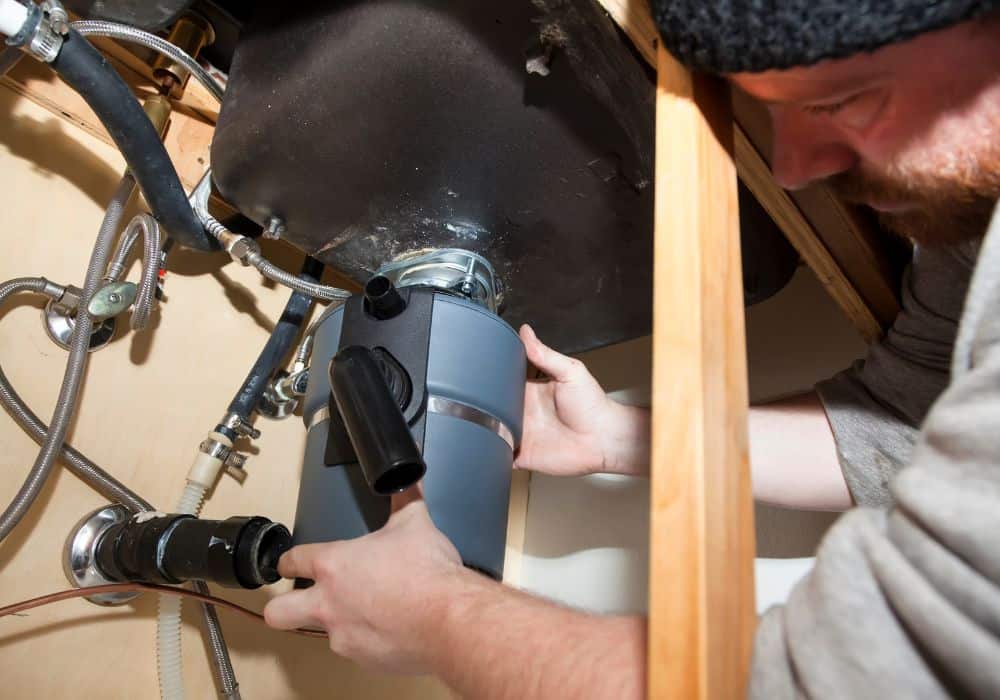
6. Clean the P-trap
The P-trap is a pipe permanently attached to the garbage disposal that looks like a P, or S. A plunger may not work to loosen clogs if the P-trap is stuck with debris, so you’ll need to clean it first. Put a bucket underneath the drain pipe and loosen the nuts on the trap so that waste and blocked water can be released into the bucket. Clean the P-trap if there is any debris there and also check the trap arm for dirt. If you can’t get through to the drain pipes properly, you can use a drain snake to unclog all the debris in the pipe.
7. Contact a plumber
If you’ve tried all the methods mentioned and none worked, you might be experiencing a more severe problem than you think; perhaps, the blade is jammed. You will need to call an expert plumber to have a look at the garbage disposal and help you get it to start working again. However, when the plumber is done with his work and is done, you must take necessary measures to ensure that you do not let the appliance clog again.
Some of these ways to prevent your garbage disposal from clogging are running the appliance daily and running water through the machine daily to avoid corrosion and keep the blades from freezing. Also, mind what you put into the disposal to grind, and ensure that you do not give it more than capacity and limit. Lastly, a daily dose of natural cleaners will keep the plumber away. Feed the appliance regularly with ground acidic citrus rinds to release the disposal of any clogs and give off a good smell.
Conclusion
Clogged garbage disposal is the last thing you want, especially on an important day. But the news is, you do not have to go running to call a plumber to fix it. Most clogs are easily fixable by any DIYer and will take less time if it’s a minor problem.
What you should know, however, is that before you take any action, you must switch off the appliance and wear gloves to keep your hands clean throughout the whole process. Also, please do not use chemicals in the appliance to avoid spoiling its plastic part. Finally, although unclogging garbage disposal may be a minor fix, you must be careful how you use it to ensure its proper maintenance and durability.
